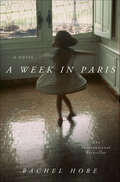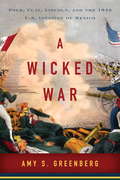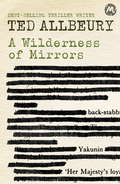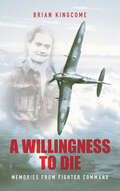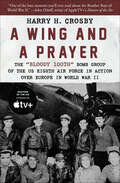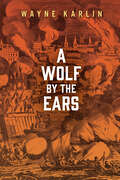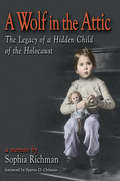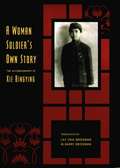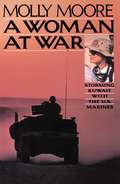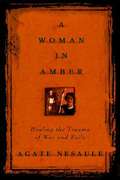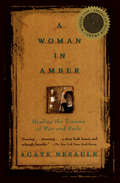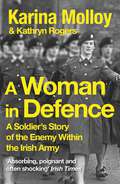- Table View
- List View
A Week in Paris: A Novel
by Rachel HoreAn aspiring musician discovers her mother’s former life in pre-WWII Paris in this “elegiac tale of wartime love and secrets” (Telegraph, UK).When talented young violinist Fay Knox arrives in Paris from England, the city feels familiar to her. But not because Fay has visited Paris before. Back home, she finds an old canvas bag with a mysterious luggage tag hidden in her mother’s old trunk, and soon starts to realize her connection with the streets of Paris runs deeper than she ever imagined.As Fay traces the past, she is taken back to 1937 Paris—and the eve of a war that changed her mother’s life forever. When she discovers a dark secret buried years ago, Fay begins to question who she really is and where she belongs.Filled with romance, family secrets, and the allure of Paris, Rachel Hore’s A Week in Paris is the compelling story of two women living in two very different worlds who share far more than a passion for music.
A Whisper of Life
by Gloria CookSet during World War II in Cornwall, England, this story chronicles the life and loves of Kate Viant, a young girl suffering the aftereffects of polio and an abusive family.
A Wicked Gentleman: Cavendish Square Book 1 (Cavendish Square Series #No. 1)
by Jane FeatherNew York Times bestselling author Jane Feather brings to life the glamour, sophistication, and intrigue of Regency-era London in this captivating novel of unexpected passions and dangerous secrets. A perfect book for fans of Mary Balogh, Eloisa James and Stephanie Laurens. Pooling their meager resources, Lady Cornelia Dagenham, her sister-in-law Aurelia, and their friend Liv Lacey arrive in London's Cavendish Square to spend a month at the home Liv has just inherited. But why anyone would show a fervent interest in purchasing the rundown property - particularly the arrogant Viscount Bonham, who clearly could afford the finest of homes - is a puzzle to Cornelia. His charms are undeniable, though - and Cornelia finds her resistance to this mysterious stranger falling away...as a sparking passion clouds her view. But their affair may place her and her friends in danger as Harry Bonham sweeps her into the sparkling whirl of high society. Leading a double life as a code breaker for the Crown, Harry is a man of many secrets. Is it Cornelia whom he truly desires, or something hidden in the house on Cavendish Square?The adventure and romance of the Cavendish Square ladies continues in To Wed A Wicked Prince and A Husband's Wicked Ways. For more of Jane Feather's signature romance check out the Blackwater Brides Trilogy, where three dashing brothers embark on a most im-proper quest.
A Wicked War: Polk, Clay, Lincoln, and the 1846 U.S. Invasion of Mexico
by Amy S. GreenbergOften forgotten and overlooked, the U.S.-Mexican War featured false starts, atrocities, and daring back-channel negotiations as it divided the nation, paved the way for the Civil War a generation later, and launched the career of Abraham Lincoln. Amy S. Greenberg's skilled storytelling and rigorous scholarship bring this American war for empire to life with memorable characters, plotlines, and legacies. When President James K. Polk compelled a divided Congress to support his war with Mexico, it was the first time that the young American nation would engage another republic in battle. Caught up in the conflict and the political furor surrounding it were Abraham Lincoln, then a new congressman; Polk, the dour president committed to territorial expansion at any cost; and Henry Clay, the aging statesman whose presidential hopes had been frustrated once again, but who still harbored influence and had one last great speech up his sleeve. Beyond these illustrious figures, A Wicked War follows several fascinating and long-neglected characters: Lincoln's archrival John Hardin, whose death opened the door to Lincoln's rise; Nicholas Trist, gentleman diplomat and secret negotiator, who broke with his president to negotiate a fair peace; and Polk's wife, Sarah, whose shrewd politicking was crucial in the Oval Office. This definitive history of the 1846 conflict paints an intimate portrait of the major players and their world. It is a story of Indian fights, Manifest Destiny, secret military maneuvers, gunshot wounds, and political spin. Along the way it captures a young Lincoln mismatching his clothes, the lasting influence of the Founding Fathers, the birth of the Daughters of the American Revolution, and America's first national antiwar movement. A key chapter in the creation of the United States, it is the story of a burgeoning nation and an unforgettable conflict that has shaped American history.
A Wife's Courage: The BRAND NEW Battersea saga for 2023 from the Sunday Times bestselling author
by Kitty NealeLondon, 1944. With bombs raining over London, keeping the Battersea Tavern open is no easy feat for owner Winnie Berry - but the community need the warmth and familiarity of the pub more than ever.After marriage, Maureen Fanning had moved out to Wandsworth with her bad-tempered husband Brancher. But when he loses both his job and their lodgings, the only people who will take them in are her kindly grandparents, Len and Renee. Getting a cleaning job at the Battersea Tavern is the least she can do to pay them back. It would all be fine... if it weren't for Brancher.Winnie is determined to take timid Maureen under her wing. But when tragedy strikes, it will be up to Maureen to find the strength she didn't know she possessed...
A Wife's Courage: The BRAND NEW Battersea saga for 2023 from the Sunday Times bestselling author
by Kitty NealeLondon, 1944. With bombs raining over London, keeping the Battersea Tavern open is no easy feat for owner Winnie Berry - but the community need the warmth and familiarity of the pub more than ever.After marriage, Maureen Fanning had moved out to Wandsworth with her bad-tempered husband Brancher. But when he loses both his job and their lodgings, the only people who will take them in are her kindly grandparents, Len and Renee. Getting a cleaning job at the Battersea Tavern is the least she can do to pay them back. It would all be fine... if it weren't for Brancher.Winnie is determined to take timid Maureen under her wing. But when tragedy strikes, it will be up to Maureen to find the strength she didn't know she possessed...
A Wife's War: A return to Woodicombe House... (Woodicombe House Sagas)
by Rosie MeddonA return to Woodicombe House…Kate Channer thought married life was going to be a grand adventure. But when Luke must go off to war before the echoes of their vows have ended, she’s left behind, desperate to do something to make a difference and help bring him home.Yet life in Devon and London spent as lady's maid to her half-sister, Naomi, brings battles of its own. Facing hardship and heartbreak they never imagined, Kate and Naomi must now find the strength to keep the home fires burning through the long uncertain months of a wife’s war.
A Wilderness of Mirrors
by Ted AllbeuryA senior SIS field officer has gone missing. Thornton is ordered to investigate discreetly. He'd talk to a few people, invent some plausible, probably bureaucratic reason. Check records. Pull back if anyone got too interested. He knew that Fisher, the missing man, was good. Good enough to do things his own way, not the head office way, and get away with it. No money troubles. No indiscretions. Balanced. No question of defection. Thorton soon enters a maze of lies, obstruction and deception surrounding an innocent German girl with extraordinary powers, KGB and CIA plots and counter plots, an East/West kidnapping - and a spy with a conscience.
A Wilderness of Mirrors
by Ted AllbeuryA senior SIS field officer has gone missing. Thornton is ordered to investigate discreetly. He'd talk to a few people, invent some plausible, probably bureaucratic reason. Check records. Pull back if anyone got too interested. He knew that Fisher, the missing man, was good. Good enough to do things his own way, not the head office way, and get away with it. No money troubles. No indiscretions. Balanced. No question of defection. Thorton soon enters a maze of lies, obstruction and deception surrounding an innocent German girl with extraordinary powers, KGB and CIA plots and counter plots, an East/West kidnapping - and a spy with a conscience.
A Willingness to Die: Memories from Fighter Command
by Brian KingcomeIn 1938 Brian Kingcome joined the RAF with a permanent commission and was posted to No 65 Fighter Squadron at Hornchurch, soon to be equipped with the Spitfire, and so it came about that Brian flew the Spitfire throughout the war. He became acting CO for No 92 Squadron at Biggin Hill and led over sixty operations, achieving the highest success rate of any squadron in the Battle of Britain. In May 1943 Brian joined Desert Air Force in Malta and took command of 244 Wing. At this time he was confirmed Flight Lieutenant, acting Squadron Leader, acting Wing Commander and at twenty-five was one of the youngest Group Captains in the Royal Air Force. Brian Kingcome may have been the last Battle of Britain pilot of repute to put his extraordinary story into print; looked upon by other members of his squadron as possibly their finest pilot, his nonetheless unassuming memoirs are related with a subtle and compassionate regard for a generation who were, as he felt, born to a specific task. Brian's memoirs have been edited and introduced by Peter Ford, ex-National Serviceman in Malaya.
A Wing and a Prayer: The "Bloody 100th" Bomb Group of the US Eighth Air Force in Action Over Europe in World War II
by Harry H. Crosby&“A compelling account of the air war against Germany&” written by the navigator portrayed by Anthony Boyle in Apple TV&’s Masters of the Air (Publishers Weekly). They began operations out of England in the spring of &’43. They flew their Flying Fortresses almost daily against strategic targets in Europe in the name of freedom. Their astonishing courage and appalling losses earned them the name that resounds in the annals of aerial warfare and made the &“Bloody Hundredth&” a legend. Harry H. Crosby—depicted in the miniseries Masters of the Air developed by Tom Hanks and Steven Spielberg—arrived with the very first crews, and left with the very last. After dealing with his fear and gaining in skill and confidence, he was promoted to Group Navigator, surviving hairbreadth escapes and eluding death while leading thirty-seven missions, some of them involving two thousand aircraft. Now, in a breathtaking and often humorous account, he takes us into the hearts and minds of these intrepid airmen to experience both the triumph and the white-knuckle terror of the war in the skies. &“Affecting . . . A vivid account . . . Uncommonly thoughtful recollections that address the moral ambiguities of a great cause without in any way denigrating the selfless valor or camaraderie that helped ennoble it.&” —Kirkus Reviews &“Re-creates for us the sense of how it was when European skies were filled with noise and danger, when the fate of millions hung in the balance. An evocative and excellent memoir.&” —Library Journal &“The acrid stench of fear and cordite, the coal burning stoves, the heroics, the losses . . . This has to be the best memoir I have read, bar none.&” —George Hicks, director of the Airmen Memorial Museum
A Wolf by the Ears (Juniper Prize for Fiction)
by Wayne Karlin“A novel that vividly examines the struggle of enslaved people to find their freedom, dignity and self-worth as our country struggled.” —Michael Glaser, former Poet Laureate of MarylandWe have the wolf by the ears, and we can neither hold him, nor safely let him go. —Thomas JeffersonDuring the War of 1812, thousands of enslaved people from plantations across the Tidewater rallied to the British side, turning against an American republic that had barred them from the promises of freedom and democracy. Set against the backdrop of rebellion and war, Wayne Karlin’s A Wolf by the Ears follows the interconnected stories of Towerhill and Sarai, two African slaves, and their master, Jacob Hallam. Educated side-by-side and inseparable as children, the three come of age as they are forced to grapple with—and break free of—the fraught linkage of black and white Americans and how differently each defines what it means to fight for freedom. Sarai and Jacob are caught in the tension between the dream of equality, the reality of slavery, and their own hearts, while Towerhill sits at the head of a company of black marines that is part of the force that takes Washington and watches the White House burn.“Wayne Karlin gives us a universe of well-honed, well-realized characters who . . . offer a new dimension about American slavery and what it did to us . . . He shows us war in language that makes him seem not just a storyteller but a witness. Karlin’s work is inspired, a gift, and a pure treasure.” —Edward P. Jones, winner of the Pulitzer Prize for The Known World
A Wolf in the Attic: The Legacy of a Hidden Child of the Holocaust
by Sophia RichmanA Wolf in the Attic: Even though she was only two, the little girl knew she must never go into the attic. Strange noises came from there. Mama said there was a wolf upstairs, a hungry, dangerous wolf . . . but the truth was far more dangerous than that. Much too dangerous to tell a Jewish child marked for death. One cannot mourn what one doesn&’t acknowledge, and one cannot heal if one does not mourn . . . A Wolf in the Attic is a powerful memoir written by a psychoanalyst who was a hidden child in Poland during World War II. Her story, in addition to its immediate impact, illustrates her struggle to come to terms with the powerful yet sometimes subtle impact of childhood trauma.In the author's words: “As a very young child I experienced the Holocaust in a way that made it almost impossible to integrate and make sense of the experience. For me, there was no life before the war, no secure early childhood to hold in mind, no context in which to place what was happening to me and around me. The Holocaust was in the air that I breathed daily for the first four years of my life. I took it in deeply without awareness or critical judgment. I ingested it with the milk I drank from my mother&’s breast. It had the taste of fear and despair.”Born during the Holocaust in what was once a part of Poland, Sophia Richman spent her early years in hiding in a small village near Lwów, the city where she was born. Hidden in plain sight, both she and her mother passed as Christian Poles. Later, her father, who escaped from a concentration camp, found them and hid in their attic until the liberation.The story of the miraculous survival of this Jewish family is only the beginning of their long journey out of the Holocaust. The war years are followed by migration and displacement as the refugees search for a new homeland. They move from Ukraine to Poland to France and eventually settle in America. A Wolf in the Attic traces the effects of the author&’s experiences on her role as an American teen, a wife, a mother, and eventually, a psychoanalyst. A Wolf in the Attic explores the impact of early childhood trauma on the author&’s: education career choices attitudes toward therapy, both as patient and therapist social interactions love/family relationships parenting style and decisions regarding her daughter religious orientationRepeatedly told by her parents that she was too young to remember the war years, Sophia spent much of her life trying to ”remember to forget” what she did indeed remember. A Wolf in the Attic follows her life as she gradually becomes able to reclaim her past, to understand its impact on her life and the choices she has made, and finally, to heal a part of herself that she had been so long taught to deny.
A Wolfish Tangle
by Sandra SookooCan a Yankee wolf shifter and Southern belle find love in the midst of the Civil War? Danger approaches from all fronts and not just on the battlefield. A past foe, a captured brother, and an unseen danger converge in A Wolfish Tangle that may cost them all!While the War Between the States grips America, Franklin Garrett fights his own battle. A wolf shifter, he successfully manages Rutledge Estates, but he's a failure at romance. When an old family foes resurfaces and threatens his idyllic life, he sends his cousin Grey and his wife Lyndal away for their safety. Unfortunately, a different sort of peril lands right on his doorstep, stirring his protectiveness and sense of duty.Caroline Harrison's brother is detained in Camp Morton, a Union war prison in Indianapolis. Led by intuition, she arrives at Rutledge Estates, where she's promptly kissed by an inebriated Franklin. Her personal desires collide with her devotion to her family and her personal promises, yet Southern charm will see her through. Though she's had enough of arrogant men, she needs his help to spring her brother.When the man who decimated the Rutledge wolf pack shows up, both Franklin and Caroline must figure out what's more important in life--family or love?
A Woman In Berlin (Virago Modern Classics #34)
by AnonymousThis is a devastating book. It is matter-of-fact, makes no attempt to score political points, does not attempt to solicit sympathy for its protagonist and yet is among the most chilling indictments of war I have ever read. Everybody, in particular every woman ought to read it' - Arundhati Roy'One of the most important personal accounts ever written about the effects of war and defeat' - Antony Beevor Between April 20th and June 22nd 1945 the anonymous author of A Woman in Berlin wrote about life within the falling city as it was sacked by the Russian Army. Fending off the boredom and deprivation of hiding, the author records her experiences, observations and meditations in this stark and vivid diary. Accounts of the bombing, the rapes, the rationing of food, and the overwhelming terror of death are rendered in the dispassionate, though determinedly optimistic prose of a woman fighting for survival amidst the horror and inhumanity of war. This diary was first published in America in 1954 in an English translation and in Britain in 1955. A German language edition was published five years later in Geneva and was met with tremendous controversy. In 2003, over forty years later, it was republished in Germany to critical acclaim - and more controversy. This diary has been unavailable since the 1960s and this is a new English translation. A Woman in Berlin is an astonishing and deeply affecting account.
A Woman In Berlin (Virago Modern Classics #34)
by AnonymousBetween April 20th and June 22nd of 1945 the anonymous author of A Woman in Berlin wrote about life within the falling city as it was sacked by the Russian Army. Fending off the boredom and deprivation of hiding, the author records her experiences, observations and meditations in this stark and vivid diary. Accounts of the bombing, the rapes, the rationing of food and the overwhelming terror of death are rendered in the dispassionate, though determinedly optimistic prose of a woman fighting for survival amidst the horror and inhumanity of war.
A Woman Living in the Shadow of the Second World War: Helena Hall's Journal from the Home Front
by Helena Hall&“These previously unpublished diaries of an English woman surviving the war at home provide a fascinating insight into society and life&” (Firetrench). Helena Hall&’s daily diary of the war years, from 1940 to 1945, is one of the most vivid, detailed and evocative personal records of the Second World War as it was experienced by people living in an English village. In her journal she describes her everyday activities alongside momentous national and international events. The war overshadows her narrative. Each daily entry gives us an insight into the extraordinary impact of the conflict on local lives, and shows how much energy and commitment ordinary people put into the war effort. This edited edition of her previously unpublished diary, written without embellishment or hindsight, shows how she heard about the war and how she reacted to it, and how it was reported and understood. It allows the reader today to connect directly with the wartime past and to see events clearly, as they were seen at the time. &“A handwritten account of what war was like and how it affected people in their everyday lives . . . Truthful and unvarnished. There&’s fear and humour mixed up and the more you read the closer to Helena Hall you become.&” —War History Online
A Woman Soldier's Own Story: The Autobiography of Xie Bingying
by Bingying XieFor the first time, a complete version of the autobiography of Xie Bingying (1906-2000) provides a fascinating portrayal of a woman fighting to free herself from the constraints of ancient Chinese tradition amid the dramatic changes that shook China during the 1920s, '30s, and '40s.Xie's attempts to become educated, her struggles to escape from an arranged marriage, and her success in tricking her way into military school reveal her persevering and unconventional character and hint at the prominence she was later to attain as an important figure in China's political culture. Though she was tortured and imprisoned, she remained committed to her convictions. Her personal struggle to define herself within the larger context of political change in China early in the last century is a poignant testament of determination and a striking story of one woman's journey from Old China into the new world.
A Woman at War
by Molly MooreDuring the Gulf War, most journalists were confined to media pools. But not Molly Moore, the senior military correspondent of The Washington Post. Moore was the only reporter to accompany a senior commanding general as he led his troops into battle in Kuwait. This is her eyewitness account of the war as she lived it by the side of the top Marine general, Walter E. Boomer. There has never been a book quite like Molly Moore's, for hers is the unique story of what a woman experienced inside the Gulf War military machine - in a male-dominated military amidst an Islamic culture in which women are on a level with the family pet. Molly Moore offers a detailed account of the buildup toward war in both Washington and the Gulf, and reveals the heroism as well as the calamity of the battlefield - the miscalculations, the failed communications, the distress and disarray among the troops and their officers. With an appealing combination of chilling authority and a warm understanding of the human dimensions of battle, she provides a frank and unprecedented view of the war planning councils as the action escalates. Here, too, are the tensions and exhilaration of daily life in a war zone - what it was like to wait for days for a gas mask when everyone else was well protected; how it felt to live in the desert, where, among other hazards, freezing winds made it impossible to take out a pair of contact lenses, and lack of privacy left women on duty with few choices about bathroom facilities. A Woman at War showcases as well the fresh and exciting new voice of Molly Moore herself, the first woman Pentagon correspondent in the history of The Washington Post. For its unusually candid and graphic depiction of men - and for the first time, women - in battle, A Woman at War will be highly valued and long remembered.
A Woman in Amber: Healing the Trauma of War and Exile
by Agate NesauleA woman in amber is one trapped and preserved in her past. Nesaule (literature and women's studies, Univ. of Wisconsin) tells a moving story to promote the reader's understanding and her own healing. As a child in Latvia, she endured the terror and dislocation of World War II at the hands of both Soviets and Germans, lived in a postwar refugee camp, and became an immigrant to the American Midwest, establishing a life there shaped by survivor's guilt and a sense of victimization. Integral to her life are family relationships, especially estrangement from her mother, stemming from the war years and the author's own unhappy marriage. In middle age, Nesaule at last comes to terms with her past, builds a new life, and offers her audience a well-written and insightful memoir. For subject collections and general readers. -Library Journal.
A Woman in Amber: Healing the Trauma of War and Exile
by Agate NesauleAmerican Book Award Winner: A &“stunning&” memoir of surviving WWII Latvia—and the long journey to healing that followed (The New York Times Book Review). &“A heartbreaking yet inspiring memoir of tragedy and healing,&” A Woman in Amber tells the story of how the occupation of Latvia during World War II affected a woman&’s relationship with her mother and husband for years to come (Tim O&’Brien). Though Agate Nesaule eventually immigrated to the United States and became successful in her professional life, she found herself suffering from depression and unable to come to terms with its cause—until she found her voice and began to share what happened to her and her family at the hands of invading Russian soldiers. In a true story that &“draws the reader forward with the suspense of a novel,&” Nesaule reveals the effects of hunger, both physical and emotional, in stories about begging Russian soldiers for food, the abusive relationship with her first husband, and the redemption that came when she met her second (The New York Times Book Review).
A Woman in Berlin: Eight Weeks in the Conquered City
by Anonymous Philip BoehmA New York Times Book Review Editors' Choice. For eight weeks in 1945, as Berlin fell to the Russian army, a young woman kept a daily record of life in her apartment building and among its residents. "With bald honesty and brutal lyricism" ( Elle), the anonymous author depicts her fellow Berliners in all their humanity, as well as their cravenness, corrupted first by hunger and then by the Russians. "Spare and unpredictable, minutely observed and utterly free of self-pity" (The Plain Dealer,Cleveland), A Woman in Berlin tells of the complex relationship between civilians and an occupying army and the shameful indignities to which women in a conquered city are always subject - the mass rape suffered by all, regardless of age or infirmity. A Woman in Berlin stands as "one of the essential books for understanding war and life" (A. S. Byatt, author of Possession).
A Woman in Berlin: Eight Weeks in the Conquered City: A Diary
by Anonymous Philip BoehmA New York Times Book Review Editors' ChoiceFor eight weeks in 1945, as Berlin fell to the Russian army, a young woman kept a daily record of life in her apartment building and among its residents. "With bald honesty and brutal lyricism" (Elle), the anonymous author depicts her fellow Berliners in all their humanity, as well as their cravenness, corrupted first by hunger and then by the Russians. "Spare and unpredictable, minutely observed and utterly free of self-pity" (The Plain Dealer, Cleveland), A Woman in Berlin tells of the complex relationship between civilians and an occupying army and the shameful indignities to which women in a conquered city are always subject--the mass rape suffered by all, regardless of age or infirmity.A Woman in Berlin stands as "one of the essential books for understanding war and life" (A. S. Byatt, author of Possession).
A Woman in Defence: My Story of the Enemy Within the Irish Army
by Karina Molloy'Absorbing, poignant and often shocking' Irish Times'Clear-eyed and unsentimental ... a sobering and timely testament' RTÉ Guide'A reporter once asked me what justice would look like for me, and I replied from the heart. Justice for me simply means that the next 18-year-old female and male who walk through those gates will be protected, and that no one will ever again have to deal with the physical, sexual and psychological abuses we experienced.'When Karina Molloy took early retirement from the Irish army in 2012, she left behind a trailblazing career spanning over three decades. For the first woman to ever reach the Senior Non-Commissioned Officer rank, however, that trail was marked by setbacks, as she faced repeated promotional glass ceilings, routine harassment and bullying, and incidents of sexual assault. Despite the toll it took on her, Karina persevered, going on to become one of the key voices today in demanding change and accountability within the Irish army.From Donegal to the Curragh Camp to tours in Lebanon, Eritrea and Bosnia, this is her astonishing story.'A searing, honest and courageous account of professional soldiering in a toxic military culture' Senator Tom Clonan, retired army captain
A Woman in Defence: My Story of the Enemy Within the Irish Army
by Karina Molloy'Absorbing, poignant and often shocking' Irish Times'Clear-eyed and unsentimental ... a sobering and timely testament' RTÉ Guide'A reporter once asked me what justice would look like for me, and I replied from the heart. Justice for me simply means that the next 18-year-old female and male who walk through those gates will be protected, and that no one will ever again have to deal with the physical, sexual and psychological abuses we experienced.'When Karina Molloy took early retirement from the Irish army in 2012, she left behind a trailblazing career spanning over three decades. For the first woman to ever reach the Senior Non-Commissioned Officer rank, however, that trail was marked by setbacks, as she faced repeated promotional glass ceilings, routine harassment and bullying, and incidents of sexual assault. Despite the toll it took on her, Karina persevered, going on to become one of the key voices today in demanding change and accountability within the Irish army.From Donegal to the Curragh Camp to tours in Lebanon, Eritrea and Bosnia, this is her astonishing story.'A searing, honest and courageous account of professional soldiering in a toxic military culture' Senator Tom Clonan, retired army captain
